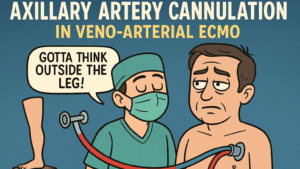Postoperative delirium (POD) remains a prevalent and severe complication in cardiac surgery, significantly affecting recovery, increasing hospital stays, and elevating patient morbidity. This study investigates the relationship between cerebral overperfusion and reduced cortical metabolism as contributors to POD in cardiac surgery patients. The central hypothesis is that an imbalance between blood flow and metabolic demand, particularly during cardiopulmonary bypass (CPB), plays a critical role in the development of POD.
The prospective observational study included 41 adult patients undergoing on-pump cardiac surgery. Neuromonitoring tools, including transcranial Doppler (TCD) for cerebral blood flow, bispectral index (BIS) for brain activity, and near-infrared spectroscopy (NIRS) for regional cerebral oxygen saturation (rSO2), were utilized. Delirium assessments were conducted postoperatively using standardized tools, such as the Confusion Assessment Method (CAM) and Delirium Observation Scale (DOS). POD was diagnosed in 13 patients (36.1%).
Key findings indicate a significant association between POD and reduced BIS values during CPB, reflecting decreased cerebral activity and metabolism. Despite this metabolic reduction, cerebral oxygenation (rSO2) in POD patients was only slightly lower and not statistically significant. In contrast, middle cerebral artery blood flow velocity (MCAV), measured using TCD, was markedly increased in patients with POD, suggesting cerebral overperfusion as a critical factor. Surprisingly, no significant differences in cerebral autoregulation impairments were observed between patients with and without POD.
The results underscore the vulnerability of the brain in POD patients, aligning with the “vulnerable brain” hypothesis. This theory posits that patients with pre-existing cognitive impairment or reduced cerebral metabolism are more susceptible to anesthetic-induced changes and POD. During CPB, pump flows not tailored to individual metabolic needs may exacerbate this vulnerability, leading to overperfusion. The study highlights that even with intact cerebral autoregulation, overperfusion can occur when pump flow rates exceed the brain’s metabolic demand, potentially leading to cerebral edema and swelling.
Although the study observed no differences in cerebral autoregulation impairments, this finding contrasts with prior research. Earlier studies linked impaired autoregulation thresholds to POD, where mean arterial pressure (MAP) exceeded the upper cerebral autoregulation limits. The current results suggest an alternative mechanism involving excessive cerebral blood flow driven by CPB rather than MAP changes. This mechanism emphasizes the importance of CPB pump flow adjustments tailored to individual cerebral metabolic rates to prevent overperfusion.
The study has several methodological strengths, including robust neuromonitoring and comprehensive postoperative delirium assessments. However, limitations include the observational design, which precludes causal inferences, and potential inaccuracies in TCD and NIRS measurements. TCD, for instance, relies on the assumption that blood flow velocity accurately reflects changes in blood flow, which may be influenced by vessel diameter. Additionally, the absence of baseline TCD data in awake patients limits the ability to contextualize cerebral blood flow changes observed during CPB.
Despite these limitations, the study offers critical insights into POD’s pathophysiology. By identifying a mismatch between cerebral blood flow and metabolism as a key contributor, the findings point to potential interventions. Adjusting CPB pump flows to individual metabolic demands may mitigate the risk of overperfusion and its associated complications. Such strategies could be particularly beneficial for high-risk patients, such as those with pre-existing cognitive impairments or reduced cerebral metabolism.
Future research should explore interventions to optimize cerebral blood flow during CPB, including dynamic monitoring of BIS, NIRS, and TCD parameters. Investigating the impact of these tailored approaches on POD incidence could offer new avenues for prevention. Furthermore, integrating cerebral autoregulation assessments with individual flow rate adjustments may enhance the effectiveness of such strategies.
In conclusion, this study sheds light on the complex interplay between cerebral overperfusion and reduced cortical metabolism in POD development. It emphasizes the need for personalized approaches to managing cerebral blood flow during CPB, paving the way for improved patient outcomes and reduced POD incidence.







